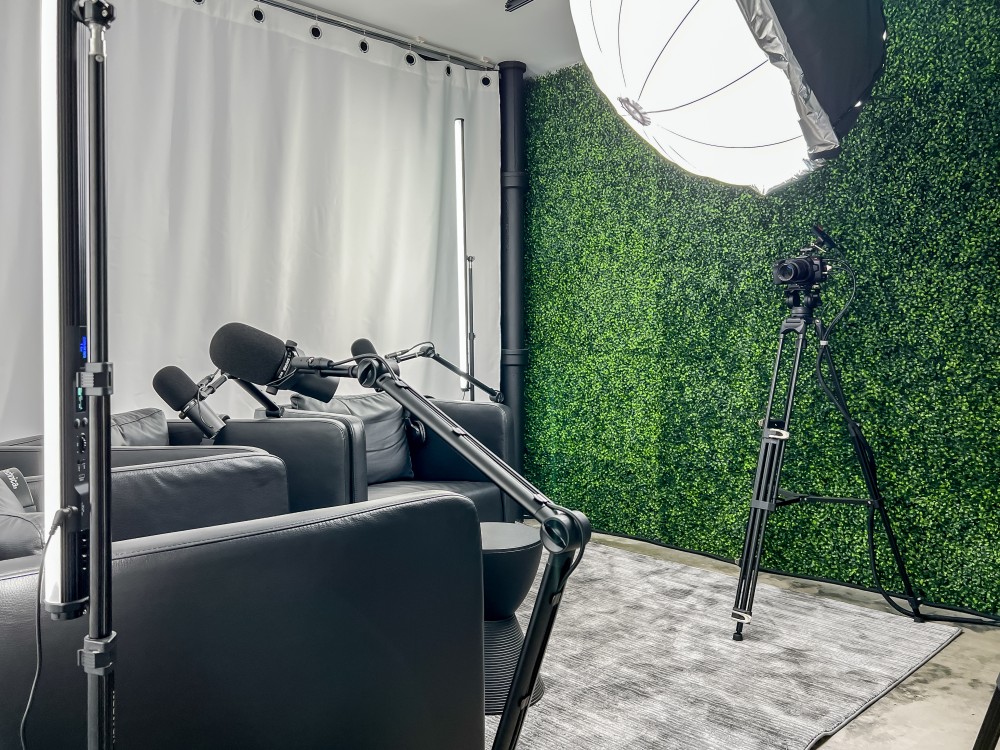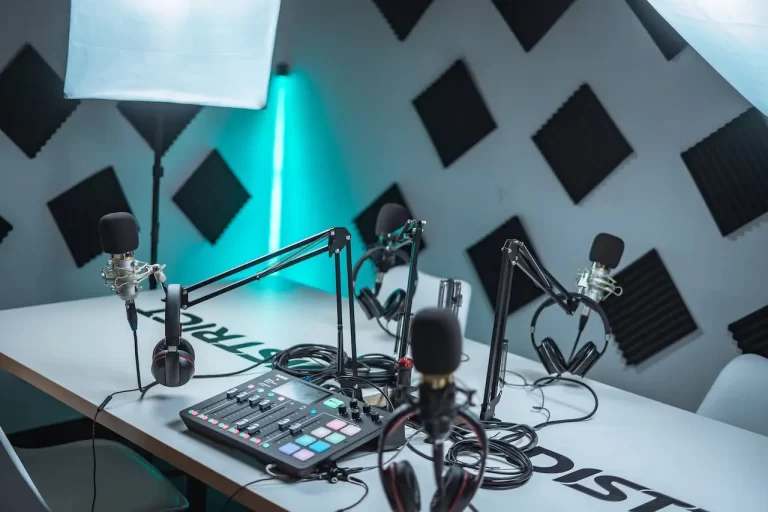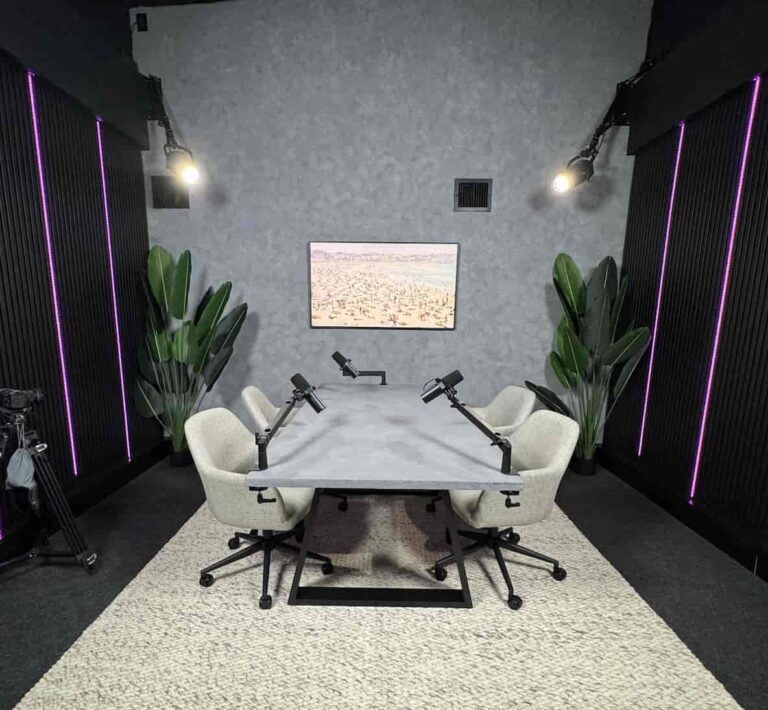How to Plan a Podcast: From Concept to Launch
Podcasting has exploded in popularity in recent years, offering a unique platform for individuals to share their stories, expertise, and passions with a global audience. However, with the increasing number of podcasts available, it’s essential to have a clear structure to stand out and deliver a compelling listening experience. In this article, we will explore the importance of structuring a podcast and provide a step-by-step guide to help you create a successful podcast from concept to launch.
Book Your Next Project With Us
Boost your creative process at Media Pouch Studios – your all-in-one hub for creation and growth
Why Having a Clear Structure is Crucial for a Successful Podcast
A well-structured podcast provides a roadmap for both the host and the audience. It helps maintain focus, enhances the overall flow of the show, and keeps listeners engaged. A clear structure allows you to deliver your content effectively, maintain consistency, and build a loyal audience. By following a structure, you can also save time during production and ensure that each episode meets your listeners’ expectations.
The Benefits of Following a Structure
- Improved Content Flow: A structured podcast ensures that your episodes have a logical progression, making it easier for your audience to follow along. It helps you organize your thoughts, present information in a cohesive manner, and deliver a compelling narrative.
- Time Efficiency: With a clear structure, you can plan your episodes in advance, which saves time during production. Knowing what segments to include and how they fit together allows for smoother recording and editing processes.
- Enhanced Engagement: A well-structured podcast keeps your audience engaged and encourages them to listen to the entire episode. By delivering valuable content in a structured manner, you create a seamless listening experience that leaves a lasting impression.
Brief Overview of What the Article Will Cover
This article will guide you through the process of structuring your podcast, covering each stage from pre-production to post-production. We will explore how to define your podcast’s concept, choose a niche and audience, develop a unique selling point, plan your episodes, select the right equipment and software, craft an engaging introduction, structure the main content effectively, create a compelling closing and call-to-action, decide between scripting and improvising, handle post-production tasks such as editing and show notes, and finally, promote your podcast for maximum reach.
Pre-production
-
Define Your Podcast’s Concept:
Before launching a podcast, clarify its purpose, theme, and overall concept. Determine the type of content you want to share, whether it’s educational, entertaining, or a combination of both.
-
Choosing a Niche and Audience:
Identifying your target audience helps you tailor your content to their interests and preferences. Focus on a specific niche to attract a dedicated following rather than trying to appeal to a broad range of listeners.
-
Developing Your Show’s Unique Selling Point:
Differentiate your podcast by discovering what makes it unique. Emphasize your expertise, perspective, or storytelling style to provide value and stand out in the crowded podcasting landscape.
-
Identifying Your Podcast Format:
Determine the format that best suits your content and aligns with your goals. Options include interviews, solo episodes, panel discussions, narrative storytelling, and more.
-
Plan Your Episodes:
Map out your podcast episodes in advance to maintain consistency and ensure a smooth flow between episodes. Consider themes, topics, guest appearances, or any other recurring elements that will give your show structure and coherence.
Equipment and Software
-
Choosing the Right Equipment for Your Podcast:
Selecting suitable equipment is crucial for delivering high-quality audio. Invest in a quality microphone, headphones, and a reliable recording device or computer setup.
-
Essential Software for Recording and Editing:
Find the right software for recording and editing your podcast episodes. Popular options include Audacity, Adobe Audition, GarageBand, and Hindenburg Journalist.
Book Your Next Project With Us
Boost your creative process at Media Pouch Studios – your all-in-one hub for creation and growth
Production
-
Introduction and Opening:
Craft an engaging and memorable introduction to hook your listeners from the start. Clearly communicate what your podcast is about, build anticipation, and set the tone for the rest of the episode.
-
Main Content:
Experiment with different formats and styles for the main content, such as storytelling, expert interviews, or roundtable discussions. Structure your main content to ensure a cohesive and engaging experience for your audience. Keep the content relevant, provide valuable insights, and maintain a lively pace.
-
Closing and Call-to-Action:
The closing of your podcast is as important as the opening. Summarize key points, provide a clear conclusion, and leave your listeners with a compelling call-to-action, encouraging them to engage further with your podcast or share it with others.
-
Scripting vs. Improvising:
Consider the pros and cons of scripting and improvising your podcast episodes. Scripting provides structure and helps ensure a polished delivery, while improvisation allows for spontaneity and authenticity. Find the right balance that suits your show’s style and format.
Post-production
-
Editing:
Learn basic editing techniques to enhance the overall quality of your podcast episodes. Trim unnecessary segments, remove background noise, and ensure a consistent audio level throughout the episode.
-
Tips for Improving Audio Quality:
Explore methods to improve audio quality, such as using noise reduction plugins, equalization, and compression. Pay attention to mic technique, room acoustics, and avoid common pitfalls like plosives and sibilance.
-
Choosing the Right Music and Sound Effects:
Select suitable music and sound effects to enhance your podcast episodes. Use them strategically to create ambiance, transition between segments, or emphasize key moments.
-
Show Notes and Transcripts:
Create show notes and transcripts to accompany each episode. These provide additional value to your audience, improve accessibility, and boost search engine optimization (SEO) by including relevant keywords and summaries.
-
Distribution and Promotion:
Choose a reliable podcast hosting platform to distribute your episodes across various podcast directories. Implement effective promotion strategies to reach your target audience, including collaborating with guests and other podcasts to expand your reach.
Book Your Next Project With Us
Boost your creative process at Media Pouch Studios – your all-in-one hub for creation and growth
Recap of the Key Points Covered
In this article, we explored the importance of structuring a podcast and provided a step-by-step guide to help you create a successful podcast from concept to launch. We discussed pre-production steps such as defining your podcast’s concept, choosing a niche and audience, and planning your episodes. We also covered equipment and software selection, crafting an engaging introduction, structuring the main content effectively, creating a compelling closing and call-to-action, scripting versus improvising, post-production tasks like editing and show notes, and finally, distribution and promotion strategies.
Final Thoughts and Tips for Structuring a Successful Podcast
Remember that a clear structure is the backbone of a successful podcast. It keeps your content focused, enhances the overall flow, and maximizes audience engagement. Experiment with different formats, find your unique voice, and continuously improve your podcasting skills. By following these guidelines and adapting them to your specific podcast, you’ll be well on your way to creating a captivating show that resonates with your audience.
To get started on your podcasting journey, book a studio at Media Pouch Studios today! Visit our website to explore our state-of-the-art facilities and take advantage of our professional services. Our studios in Austin, Texas, equipped with the latest AI technology, are designed to meet the needs of creators at all levels. Whether you’re a beginner or a seasoned professional, Media Pouch Studios is here to support you in producing high-quality content. Book your studio now and unleash your podcasting potential!







